Grasp patterns are classified as static or dynamic. Children who have a static grasp, move the pencil with their wrist or arm. To have a dynamic grasp pattern, the fingers and the thumb activity work together to get dynamic movement.
The optimal grasp pattern is a tripod grasp. The thumb, index and long finger work together to point and bend.
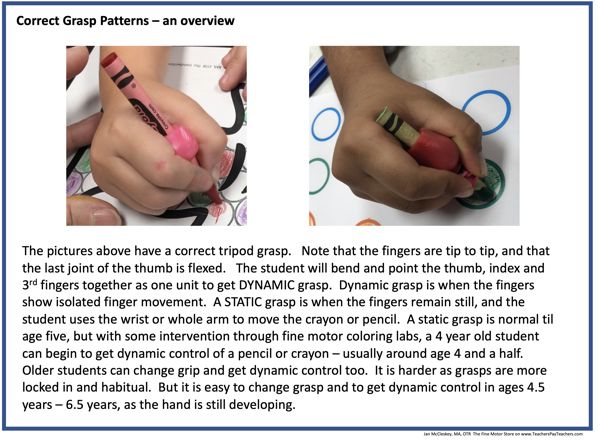
Here is a link to a training manual to teach dynamic grasp on a pencil. Best of all, it is FREE! To work on a dynamic grasp, it is important to work on developmental hand skills. Tongs activities, scissors activities and punch dot activities work very well! This file discusses activities that will work on changing direction when coloring and writing.
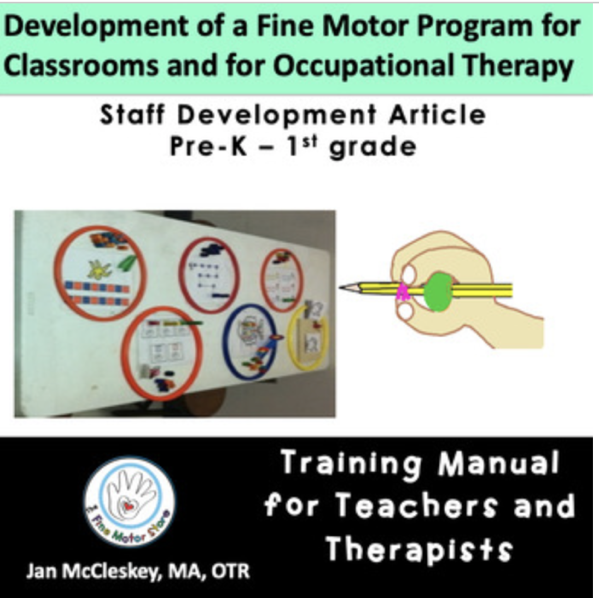
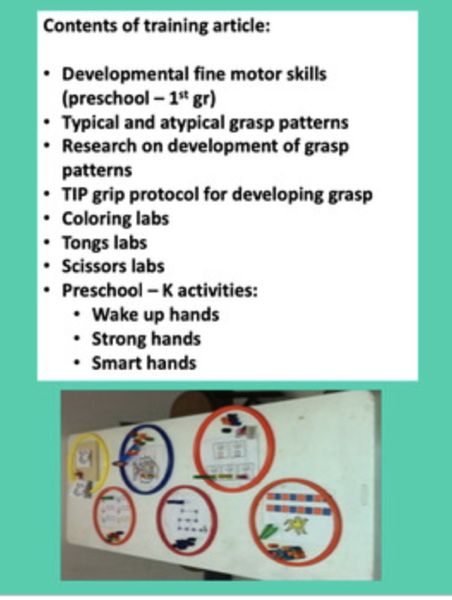
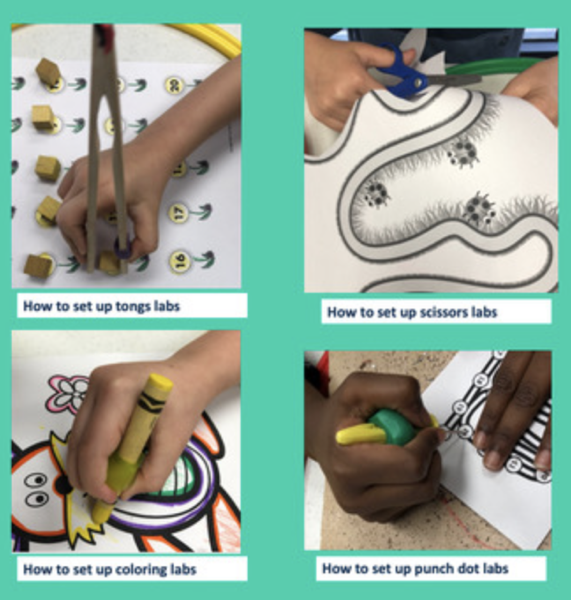
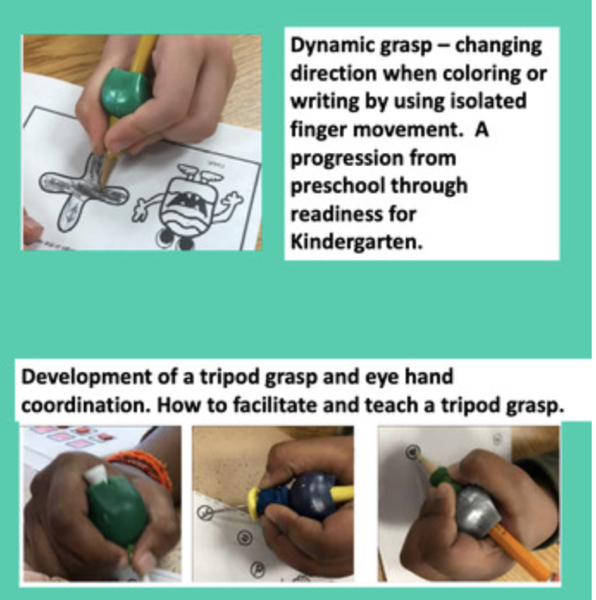
When looking at grasp patterns, the most important thing is to look at the last joint of the thumb. If the last joint (Interphalageal joint)) of the thumb, it should actively flex and extend.
One common problem, is that there is a significant amount of students who have joint laxity in this joint. These students lock their thumb into extension or hyperextension to get stability on a pencil:
The Handwriting Clinic/The Fine Motor Store uses the TIP grip protocol to passively hold the thumb in flexion. This will allow the student to work on coloring, punch dot and pencil labs while specifically strengthening the flexor pollicus longs muscle (the muscle that bends the thumb). Often students are weak in the flexor pollicus longs because they hyperextend their thumb at the last joint during strengthening activities such as coloring, buttons, play dough activities and basically any fine motor activity that needs strength in the thumb! Many incorrect or static grip patterns develop due to the thumb being locked into extension. Many students will also develop a lateral grasp, just to keep the thumb flexed and to achieve some dynamic control. Janet Summers (2002 – referenced in the above article) looked at joint laxity and it’s influence on grip. Joint laxity in the thumb IP joint was the most predominant joint that had laxity, and the most common grasp pattern was the lateral grasp when there was joint laxity.
Here are pictures of students ranging from age 4 – 10, who have locked their thumb into extension for stability as a young child, and then developed static grasp patterns:
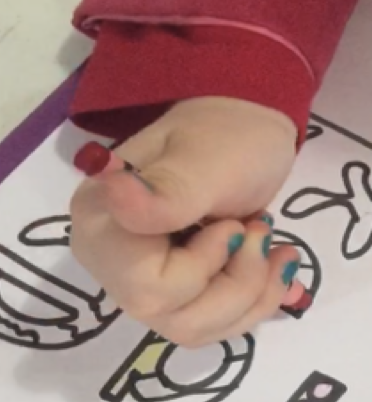
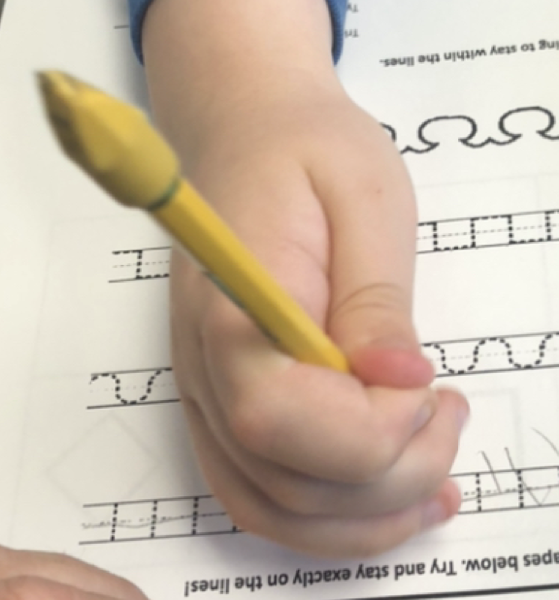
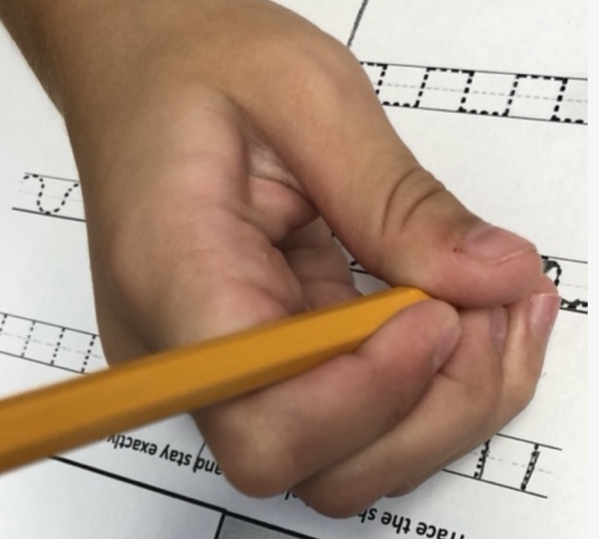
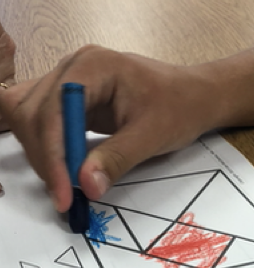
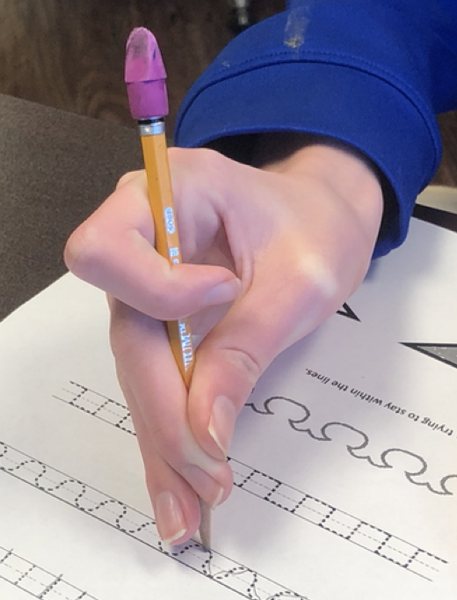
I have a case study of a little boy who came at age 4 1/2. He had SIGNIFICANT joint laxity in the thumb IP joint. We put him on the Tip grip for tongs, and coloring labs. We did not allow him to use broken crayons (he hyperextended his thump IP joint when holding them). By age 5 1/2 he still had joint laxity, but he had improved strength in the flexor pollicus longs, and had co-contraction. he progressed off the TIP grip and used a regular pencil with a dynamic tripod grasp. We prevented future pain from the significant hyperextension during writing!
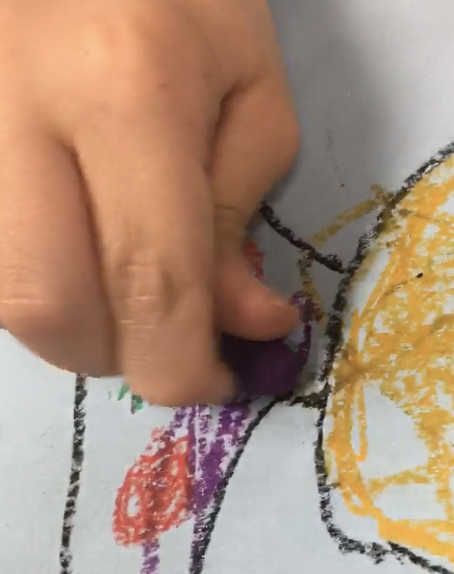

For a VIDEO of his coloring skills, please visit https://www.youtube.com/watch?v=SrLqg_sGN2g
The first picture is this student coloring with a broken crayon (I NEVER recommend broken crayons for any student who hyperextends their thumb IP joint). His control of the crayon was moving his entire arm. The second picture is of this student with a TIP grip, coloring the SAME art project. He showed independent , dynamic grasp and pointed and flexed his thumb and index/3rd fingers to color in small circles. The student eventually progressed off the TIP grip with a dynamic tripod grasp!
By signing up for this blog, you will receive a free Crayon Power file with training handouts for the TIP grip! You will also receive pencil warm-up files of activities to promote grasp with older students!
Here is a video link for how to adapt activities with the TIP grip. (Full credit is given to The Pencil Grip company, who manufactures The Pencil Grip in jumbo or regular size.
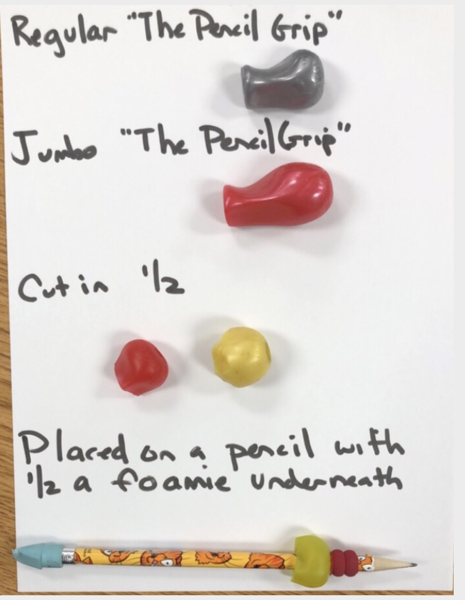 (throw away the triangular piece and use the round side facing down) Use the Jumbo sized pencil grip for larger hands.
(throw away the triangular piece and use the round side facing down) Use the Jumbo sized pencil grip for larger hands.
A TIP grip video is available at:

https://www.teacherspayteachers.com/Product/How-to-Hold-a-Pencil-Activities-Freebie-4252489
TWO PRODUCT FREEBIES for registering and signing up for
The Fine Motor Store.com blog
Please be sure to register info to get these 2 free products. You will also be notified for new products alert – products are 50 % off the first 24 hours (excluding the Frazzled OT Distance Learning Activities).
1. 
This file works on developing a dynamic grasp in young children (preschool – Kindergarten). Training handouts are included!
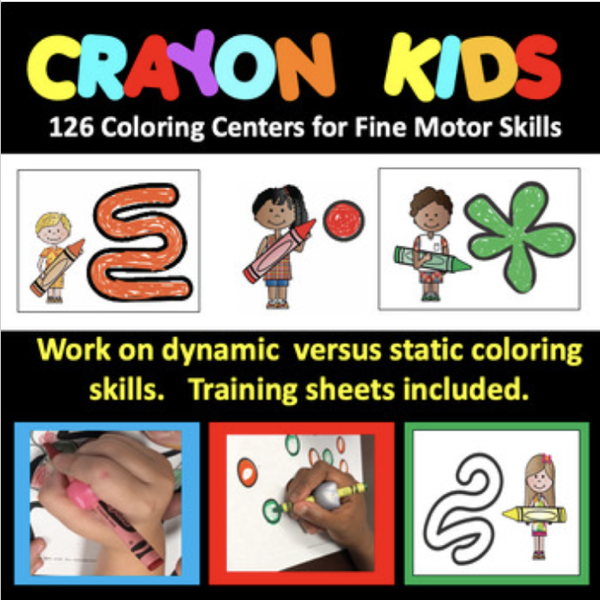
2. 
This file works on developing a dynamic grasp in Pre-K, Kindergarten through Older students. Training handouts are included!
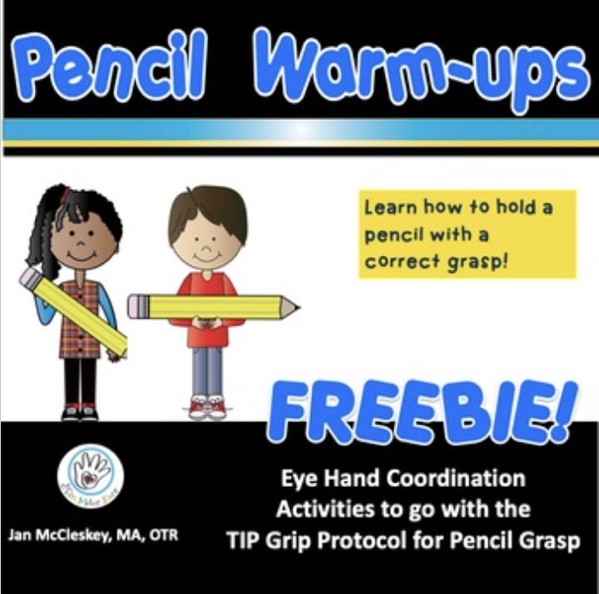
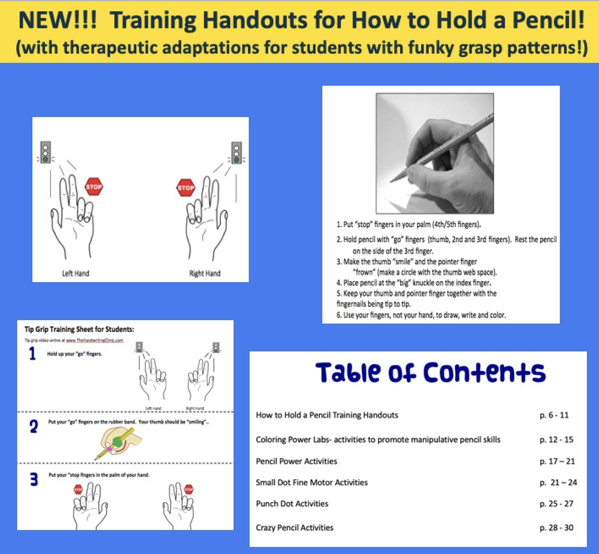
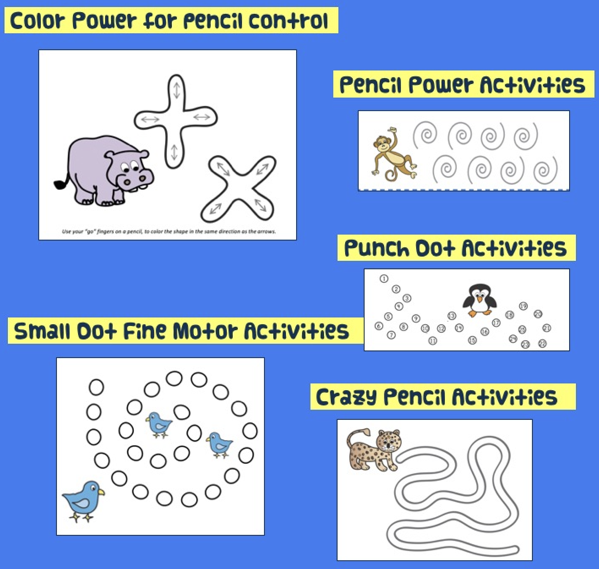
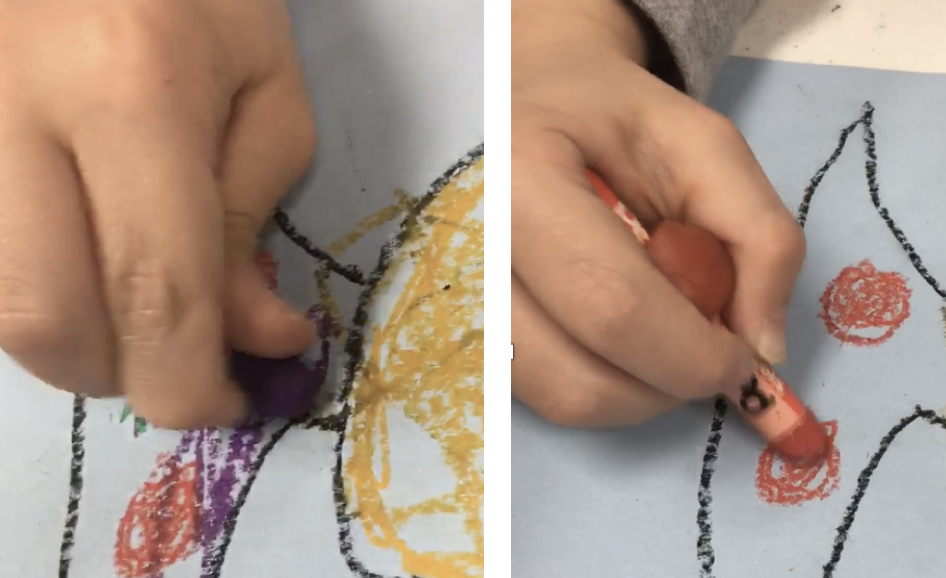

What to do when they keep losing the grip or don’t want to use it due to looking different from peers.